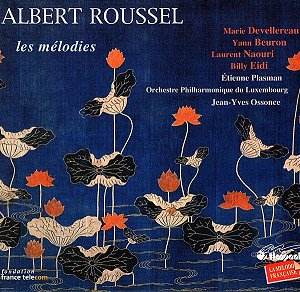 Composer: Albert Rudolph Fäsy
Composer: Albert Rudolph Fäsy
Works: Götz von Berlichingen Prelude, Der Triumph der Liebe, Sempach, Columbus
Performers: Moscow Symphony Orchestra, conducted by Adriano
Recording: Marco Polo 8.225134
Label: NAXOS
Albert Rudolph Fäsy remains an enigmatic figure in the 19th-century Swiss musical landscape, his works largely overlooked yet steeped in a historical context that merits renewed attention. Fäsy’s compositions, created during a time when the influence of Wagner and Liszt predominated, reflect a naturalistic and often dramatic flair, albeit with a somewhat simplistic melodic construction. The four orchestral pieces presented in this recording, likely penned between 1870 and 1890, reveal a composer caught between emulating the grandeur of his contemporaries and forging his own path.
The performance by the Moscow Symphony Orchestra under Adriano is marked by a commendable sense of vigor, particularly evident in the Götz von Berlichingen Prelude. Here, the orchestra’s brass and woodwinds emerge with a robust character, capturing the militaristic essence of the march. However, the construction of the piece feels loose, with transitions appearing somewhat abrupt, lacking the meticulous craftsmanship of Wagnerian or Brucknerian architecture. The orchestra’s technical execution varied; while the brass displayed moments of brilliance, there were instances of imprecision that detracted from the overall cohesion of the piece.
Der Triumph der Liebe stands out as a tone poem rich in emotional contrast. The duality between the tempestuous opening and the joyous resolution effectively captures the essence of Schiller’s text. The orchestration demonstrates Fäsy’s ability to create dramatic atmospheres, particularly in the menacing motifs that characterize the initial sections. Adriano adeptly navigates these contrasts, though the orchestral balance occasionally falters, particularly in the transition from the darker themes to the brighter, love-infused passages. The strings, while offering moments of lyrical beauty, sometimes lack the finesse required for seamless transitions.
Sempach, inspired by the historical battle against the Hapsburgs, showcases Fäsy’s penchant for thematic development through concise motifs. The solemn bell tolls and marching timpani evoke a sense of impending conflict, yet the work ultimately suffers from prolonged modulations that feel unproductive. The climactic moments, while promising, do not yield the expected dramatic payoff, leaving the listener yearning for a more substantial resolution. The bells at the conclusion, unfortunately out of tune with the orchestral fabric, further highlight the challenges in this performance.
The most ambitious work, Columbus, unfolds in six interconnected sections, yet it struggles to maintain a cohesive narrative. The opening, “Hail thee, Columbus,” introduces a promising lyrical theme but is soon interrupted by a sailor’s tune that feels disjointed. The thematic material, while occasionally charming, often meanders, with the development lacking depth. The Vision section introduces a harp, yet the delicate scoring does not fully compensate for earlier thematic inconsistencies. Adriano’s interpretation here is commendable, with moments of clarity emerging amidst a swirling orchestral texture, yet the reliance on simplistic motifs can at times feel overly reductive, drawing unwelcome parallels to minimalist tendencies that may not serve Fäsy’s intent.
Recording quality plays a significant role in the overall reception of this album. The acoustic environment appears less than ideal, contributing to a sense of distance that detracts from the orchestral immediacy. The lack of clarity in string passages particularly hinders the listener’s engagement, raising questions about whether these shortcomings stem from the venue’s acoustics or the orchestra’s execution. While Adriano’s conducting demonstrates a solid grasp of Fäsy’s intentions, the recording’s flatness and occasional blurring compromise the dynamic range essential for such orchestral works.
Fäsy’s music, while not achieving the melodic sophistication of his contemporaries, possesses a certain charm and dramatic allure that merits exploration. His compositions, especially when performed with greater precision and clarity, could offer a refreshing perspective on the orchestral repertoire of the late 19th century. This recording, though flawed in execution and sonics, invites listeners to reconsider Fäsy’s place within the pantheon of classical music, suggesting that with further scholarly and performance attention, his works may yet find their rightful audience.



